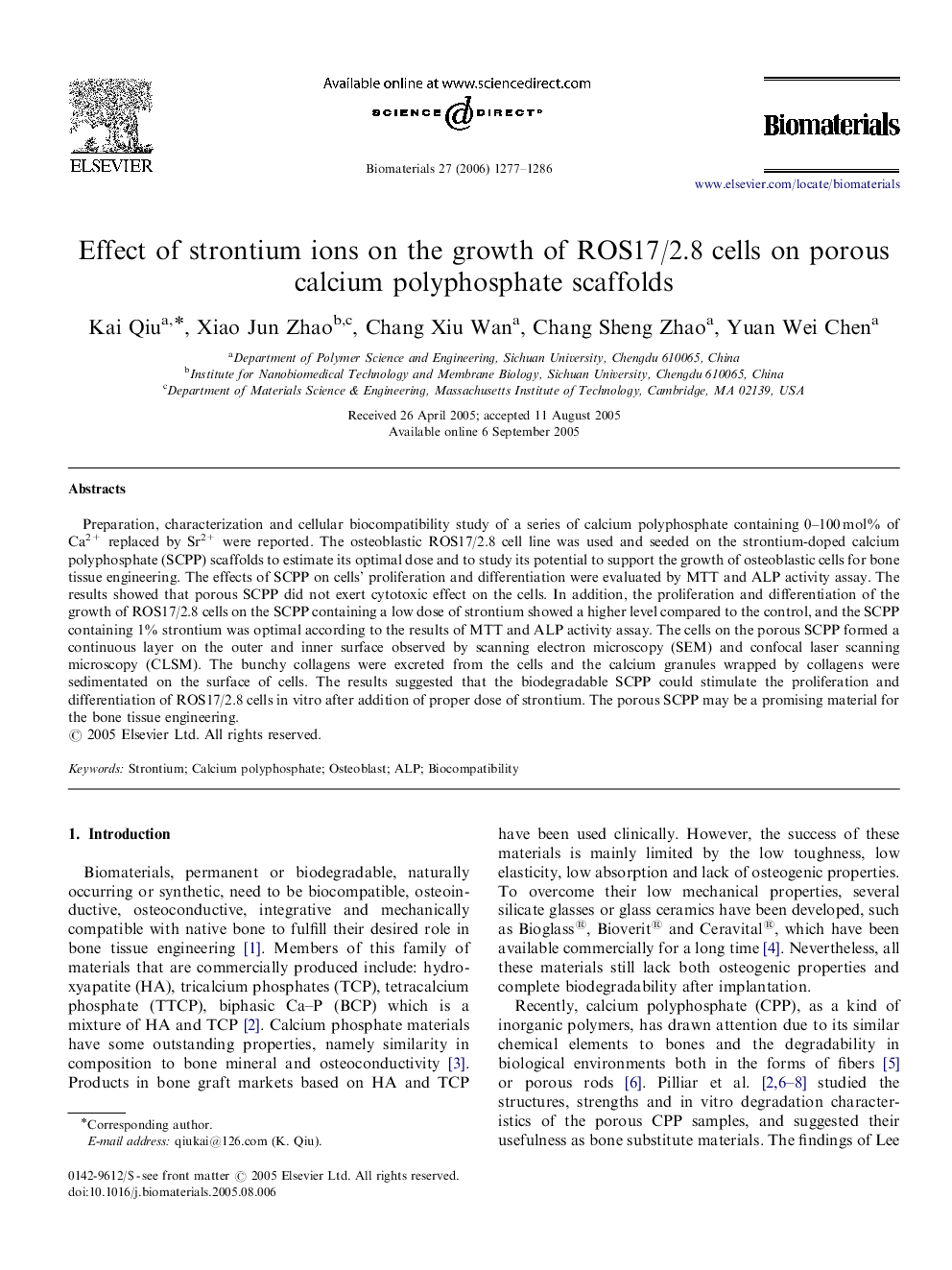| Article ID | Journal | Published Year | Pages | File Type |
|---|---|---|---|---|
| 11536 | Biomaterials | 2006 | 10 Pages |
sPreparation, characterization and cellular biocompatibility study of a series of calcium polyphosphate containing 0–100 mol% of Ca2+ replaced by Sr2+ were reported. The osteoblastic ROS17/2.8 cell line was used and seeded on the strontium-doped calcium polyphosphate (SCPP) scaffolds to estimate its optimal dose and to study its potential to support the growth of osteoblastic cells for bone tissue engineering. The effects of SCPP on cells’ proliferation and differentiation were evaluated by MTT and ALP activity assay. The results showed that porous SCPP did not exert cytotoxic effect on the cells. In addition, the proliferation and differentiation of the growth of ROS17/2.8 cells on the SCPP containing a low dose of strontium showed a higher level compared to the control, and the SCPP containing 1% strontium was optimal according to the results of MTT and ALP activity assay. The cells on the porous SCPP formed a continuous layer on the outer and inner surface observed by scanning electron microscopy (SEM) and confocal laser scanning microscopy (CLSM). The bunchy collagens were excreted from the cells and the calcium granules wrapped by collagens were sedimentated on the surface of cells. The results suggested that the biodegradable SCPP could stimulate the proliferation and differentiation of ROS17/2.8 cells in vitro after addition of proper dose of strontium. The porous SCPP may be a promising material for the bone tissue engineering.
